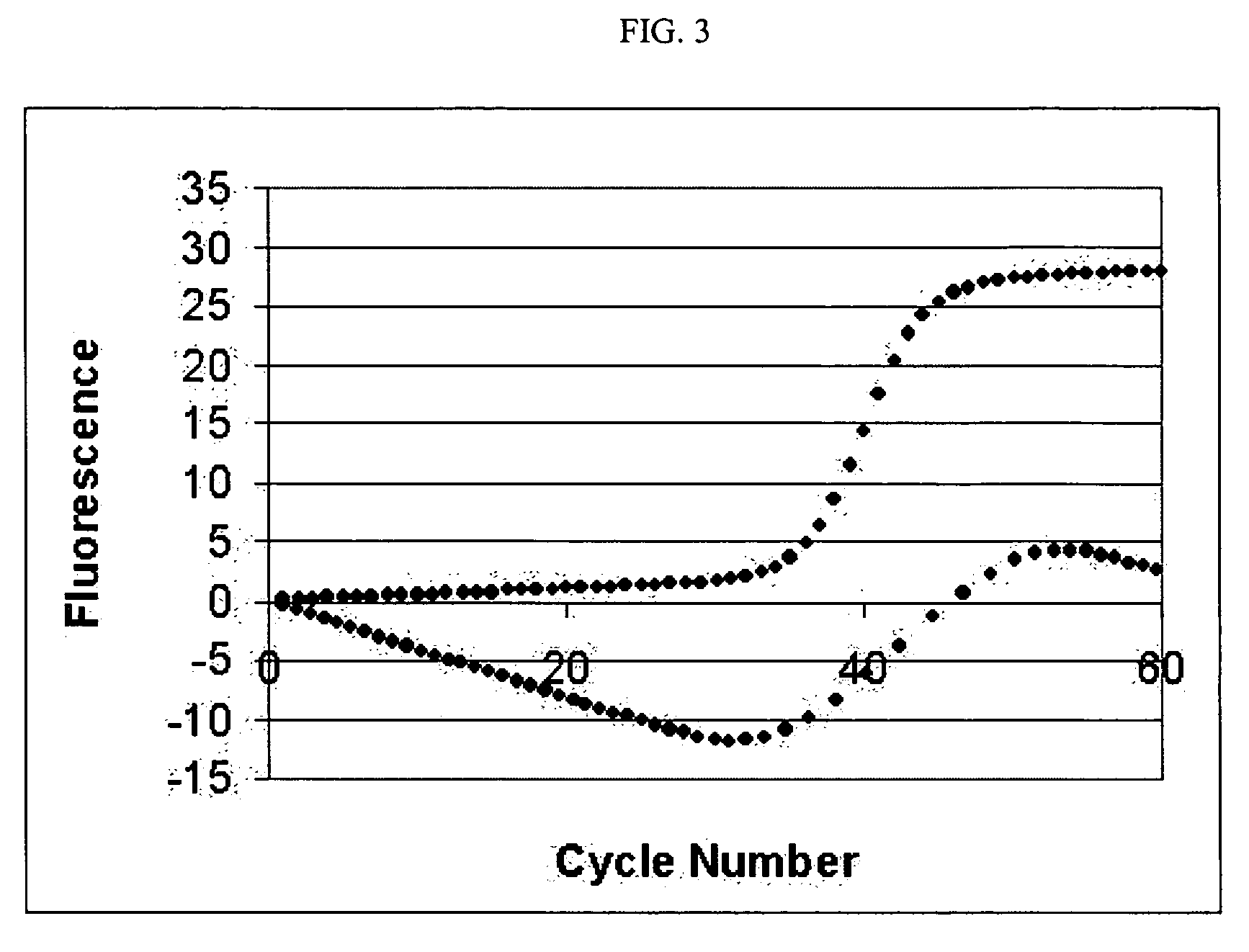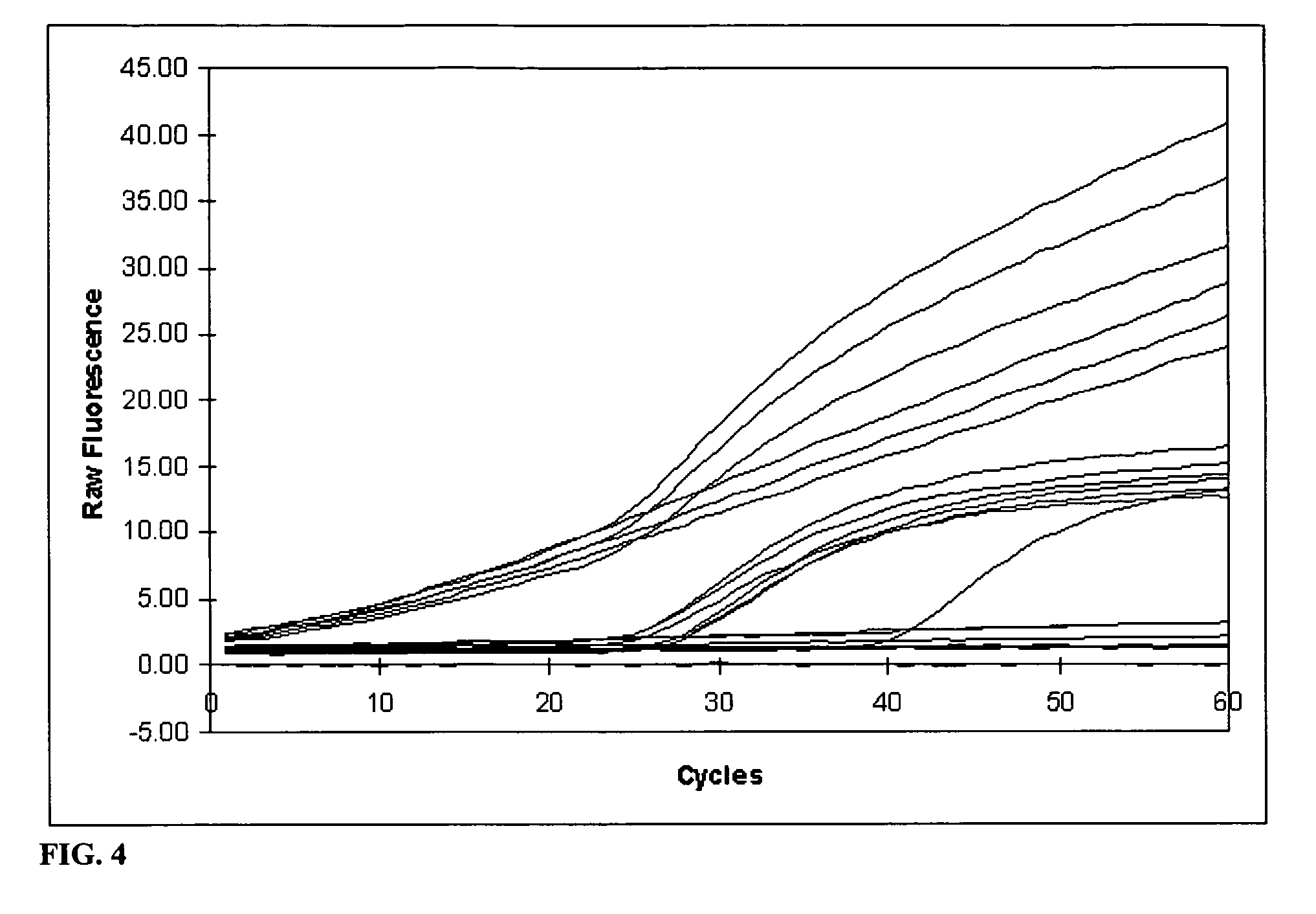PCR elbow determination by rotational transform after zero slope alignment
a rotational transform and elbow technology, applied in the field of determining the characteristic cycle threshold (ct) or the elbow value in the pcr amplification curve, can solve the problems of difficult optimization, if not impossible, all these methods have severe drawbacks
- Summary
- Abstract
- Description
- Claims
- Application Information
AI Technical Summary
Problems solved by technology
Method used
Image
Examples
Embodiment Construction
[0036]One example of an amplification curve 10 in the context of a PCR process is shown in FIG. 1. As shown, the curve 10 includes a lag phase region 15, and an exponential phase region 25. Lag phase region 15 is commonly referred to as the baseline or baseline region. Such a curve 10 includes a transitionary region of interest 20 linking the lag phase and the exponential phase regions. Region 20 is commonly referred to as the elbow or elbow region. The elbow region typically defines an end to the baseline and a transition in the growth or amplification rate of the underlying process. Identifying a specific transition point in region 20 can be useful for analyzing the behavior of the underlying process. In a typical PCR curve, identifying a transition point referred to as the elbow value or cycle threshold (Ct) value is extremely useful for understanding efficiency characteristics of the PCR process. Other processes that may provide similar sigmoid or growth curves include bacterial...
PUM
| Property | Measurement | Unit |
|---|---|---|
| angle | aaaaa | aaaaa |
| rotation algorithm | aaaaa | aaaaa |
| rotation angles | aaaaa | aaaaa |
Abstract
Description
Claims
Application Information
 Login to View More
Login to View More - R&D
- Intellectual Property
- Life Sciences
- Materials
- Tech Scout
- Unparalleled Data Quality
- Higher Quality Content
- 60% Fewer Hallucinations
Browse by: Latest US Patents, China's latest patents, Technical Efficacy Thesaurus, Application Domain, Technology Topic, Popular Technical Reports.
© 2025 PatSnap. All rights reserved.Legal|Privacy policy|Modern Slavery Act Transparency Statement|Sitemap|About US| Contact US: help@patsnap.com



